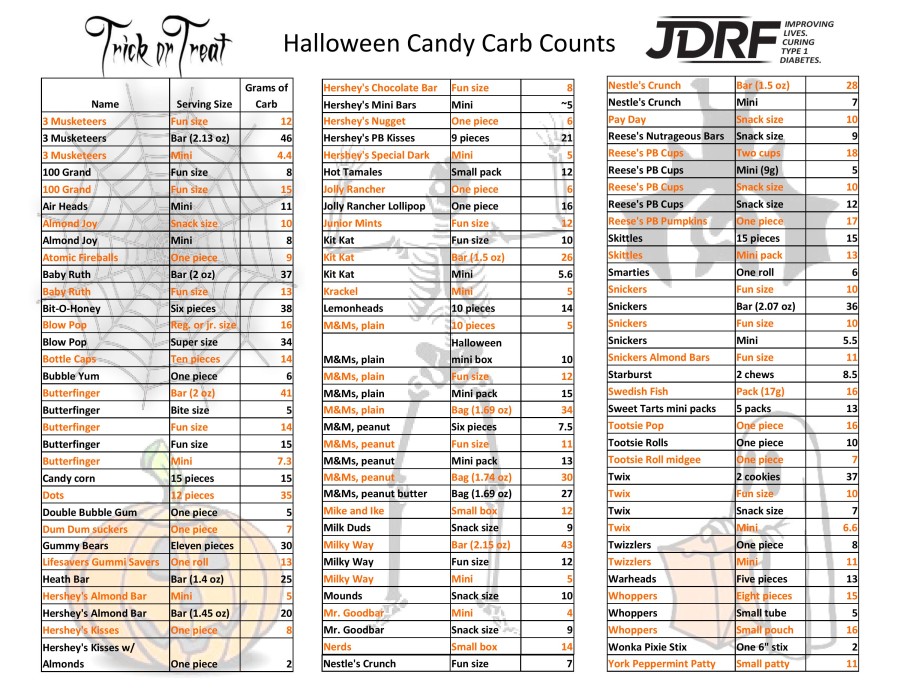With just a few tricks in mind, Halloween can still be a treat for children with T1D. While children across the nation are going to parties, running from door to door, and eating chocolate and candy by the bagful, there are ways that Halloween can still be fun for children who don’t have the traditional treats in their diet.
Dr. Aaron Kowalski, Scientific Program Manager for Breakthrough T1D, was diagnosed with T1D as a child, as was his brother. He grew up having to deal with Halloween envy. “It’s hard to watch other kids tear into sacks of candy, but with a little pre-planning, our parents managed to make the holiday more fun for us,” he said. Our parents made the neighbors aware of our situation, and they in turn made sure to have healthy alternatives on hand and even gave us coins instead of candy. We never knew the difference, and it saved us from feeling different from our friends.
By the time they’re going trick-or-treating or being invited to Halloween parties, children with T1D generally know what they can’t eat and why. What’s important is to exchange the sugar shock for something just as good—or better. Here are some ideas to help make sure there are no real scares during the holiday.
Trade candy for cash or toys. Chef Michael Nischan has two sons with T1D, and he says that a little candy on Halloween is OK, but suggests that most of their treats be exchanged for a toy or something they really want. “Parents can also buy back the collected candy with a coin for each piece,” he says, adding that “older kids may appreciate their parents making a contribution to a worthy charity like Breakthrough T1D.”
Plan alternative activities and treats. Host a Halloween party and offer treats like glow-in-the-dark insects, Halloween-themed stickers, and cause-related wristbands. Popcorn balls and sugar-free candy and other sugar-free treats can replace the usual sweets. By placing the focus on fun and not food, the holiday can be better and healthier for everyone involved.
Inform teachers and health care officials at your child’s school. Prepare your child as well as faculty and staff with information about T1D before Halloween events begin. The holiday can be an opportunity to teach about health, science, and diet. Some schools have used Halloween as an occasion to calculate the carbohydrate counts for varied serving sizes of sweets before classroom parties.
Take inventory. If you are going to allow your child to eat candy, be sure to have them pick out only a few pieces at a time and eat them according to a supervised schedule.
